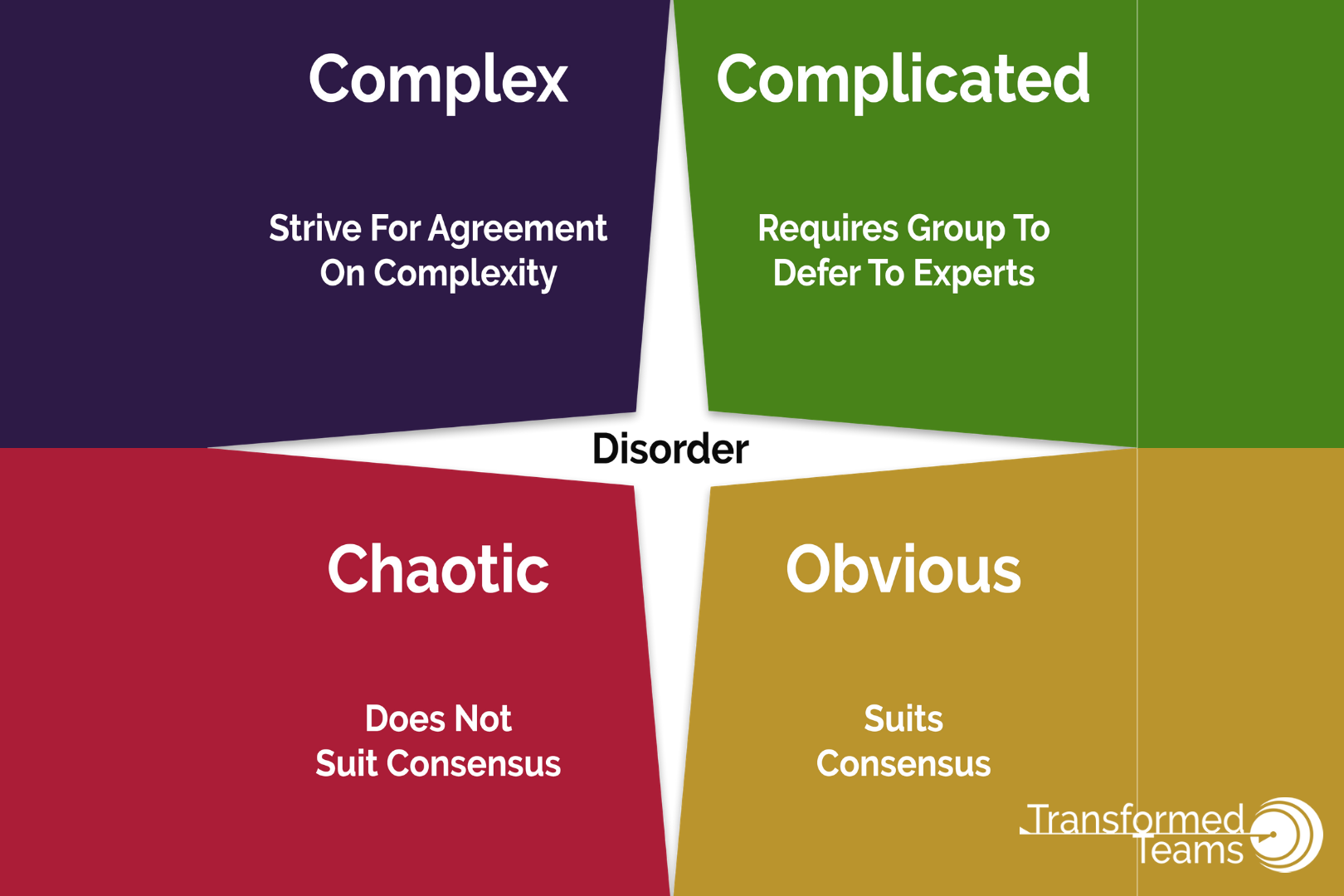
Here are five simple strategies most leadership teams can use for team decision making in non-crisis situations.
Usually when a decision is put to a leadership team rather than an individual, it is either because a complex problem is at hand or because you need team buy-in to move forward.
If you need team buy-in, you will be fully aware that once the decision is introduced to your leadership team, they will have the option to agree or disagree. You will want to handle your meeting so that it achieves the outcome you’re hoping for.
However a word of caution here: strong leaders recognise the wisdom of their team, especially when the team decision heads in a direction opposite to their own. The best thing to do is to carefully consider the view outlined by your team.
If, on the other hand, you’re dealing with a complex problem, then your aim as the leader, influencer or meeting organiser will be to reach a decision that will be far from simple or obvious. You will want to capture the wisdom of the group. Your main challenge may be to balance enthusiasm with careful consideration as potentially innovative options are considered from all angles to maintain a positive Workplace Experience.
How can you handle these dynamics to help your team make wise decisions, without affecting their engagement and enthusiasm?
1. Assume you’ll disagree
Your first ‘strategy’ is not so much a strategy as a foundation for establishing an approach around decision-making. Many leaders assume that things will go ‘fine’ and this can be their downfall. Fine doesn’t necessarily mean that the best decisions are made. ‘Fine’ can also mean civility and apparent lack of agreement, which is actually disagreement that takes longer to surface. It is better to have an open discussion that surfaces a conversation about disagreement. Talk about disagreement as a normal, healthy, accepted and expected part of strong team decision-making. Welcome disagreement, even before a decision is on the table.
2. Make a pre-commitment to each other to back the group’s decision
Another important foundation also needs to be built before any decisions are made. Take the time to seek each leadership team member’s commitment to fully support each decision made by the group. A good time to do this is when the team is forming initially, reforming after staff changes or a change in goal, or reviewing progress and team processes, for example at a team planning day. Here is the most likely scenario for this strategy failing: when team members don’t trust that decision-making processes empower each team member. It can also fail if the foundations of strong teamwork are otherwise shaky. Seek full commitment before a decision is on the table
3. Ask “What do each of us know about this situation?”
I wouldn’t be surprised if your leadership team meetings are dominated by one or two characters who fill the air time. This is not necessarily a bad thing. However, with a variety of personalities at the table, and considering the dynamics of power play, you will usually only gain the full participation of each team member if you ask each person to contribute. This simple question: “What do each of us know about this situation?” is absolutely key for flushing out perspectives that will add to the picture. You’ll be surprised at what this one question can do for team dynamics. Don’t assume one person can see the whole picture, engage every person’s viewpoint.
4. Listen, actively
Once you’ve learned the difference between active listening and the listening that most people do most of the time, you’ll discover they are worlds apart. People don’t often actually listen, so much as stay quiet while they wait for their chance to speak. Active listening helps the speaker to express their views and helps listeners to appreciate the full meaning of what is being said. It is a skill that requires practise. Pause your desire to speak and model active listening.
5. Match your options to the situation
Leadership teams can get into a rut where they assume that most of the situations they face are similar in nature. This assumption can lead to bad decisions because the options or solutions on the table won’t make the right difference in the situation. A decision-making framework such as the Cynefin framework (pronounced ‘kuh-nev-in’) helps you identify the nature of the situation: is it simple, chaotic or somewhere in between? This Harvard Business Review article by the framework’s creators explains how it helps to identify the type of situation and match your decision-making style. For example, New York mayor Rudy Giuliani was exceptionally effective during the chaotic conditions of 9/11 but was widely criticised once the conditions shifted to the complex domain.
Simple, or ‘obvious’ situations are stable, with obvious cause-and-effect at play. The right answer is often self-evident. Complicated situations may contain many right answers, even though these solutions may be less evident to all and only evident to experts. Complex situations tend to be more common and for these situations there is no right answer – an experimental mode of management is all that succeeds. Chaos is another situation altogether, when it is ineffective to put decisions to a team. The lesson is to pass your situation through the Cynefin framework to frame the options you put on the table for team decision-making.
If you’ve found these five strategies useful, you may be interested in my next article, which will be about how to choose the right decision-making process for your team or organisation. Examples include consensus and majority rule.
Schedule an Information Call today to find out more about our services.

